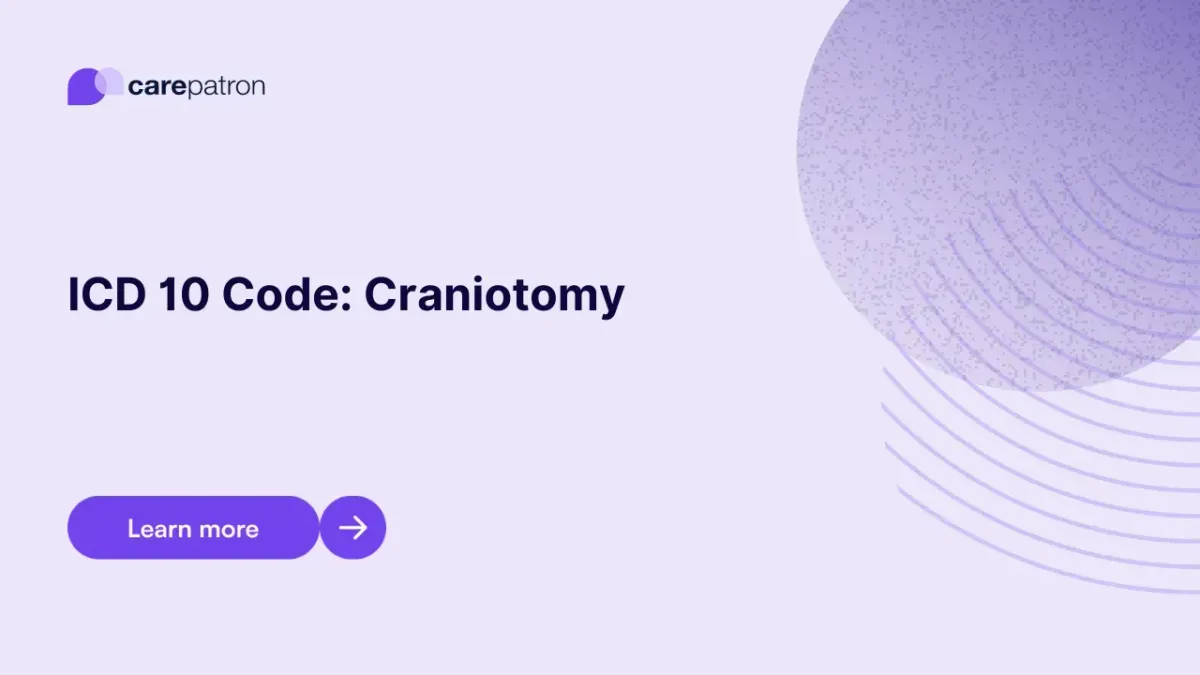
Craniotomy ICD-10-CM Codes | 2023
Read this short guide to learn about Craniotomy ICD codes you can use.
Use Code
Commonly asked questions
It can take them three to five hours. This will depend on the surgery that follows after the removal of the bone flap.
Yes. Like with any invasive procedure, there is a risk of infections, pain, bleeding, seizures, strokes, hydrocephalus, and the possibility of lapsing into a coma. Healthcare professionals will inform patients about these risks and do everything they can to ensure that they significantly lower the risk.
It will take about six to eight weeks to recover from a craniotomy. This includes the week-long hospital stay after the operation. Those who undergo craniotomy will be told to avoid physical activities because they will have difficulty with balance, coordination, walking, and speech.
EHR and practice management software
Get started for free
*No credit card required
Free
$0/usd
Unlimited clients
Telehealth
1GB of storage
Client portal text
Automated billing and online payments
